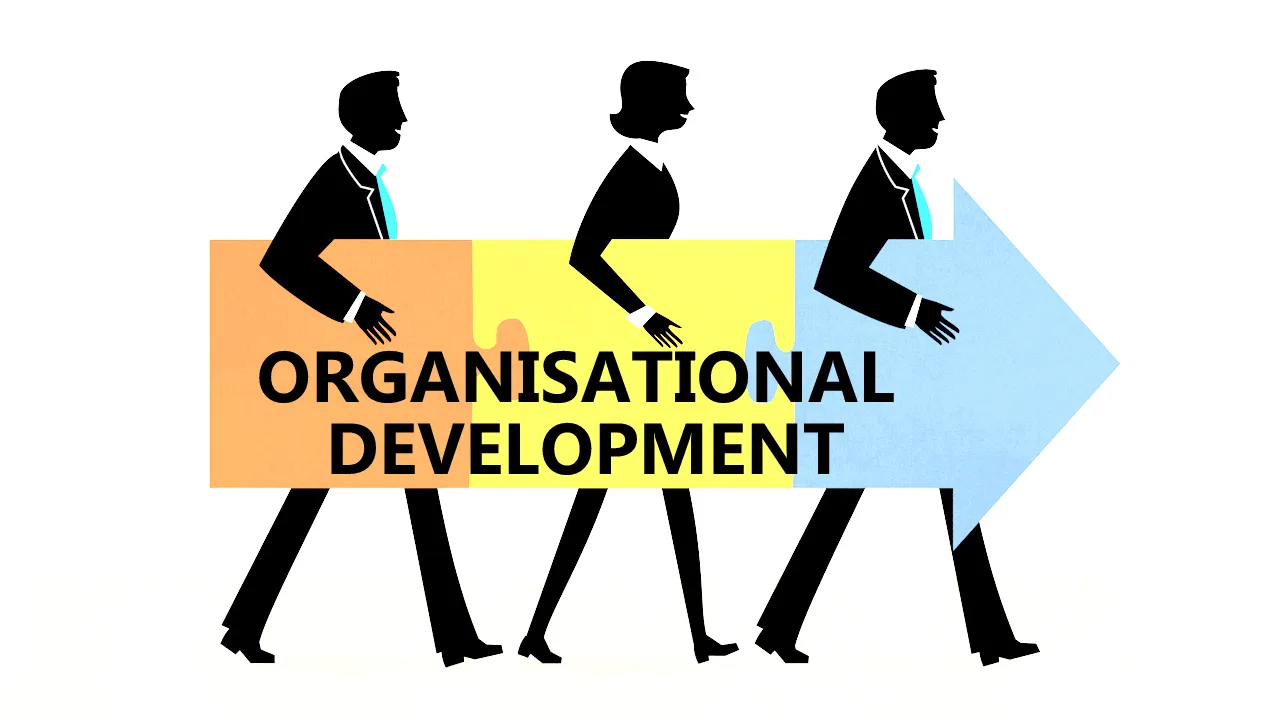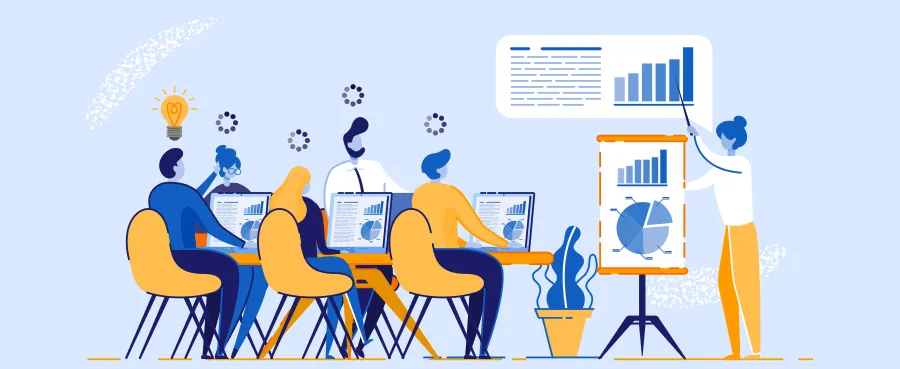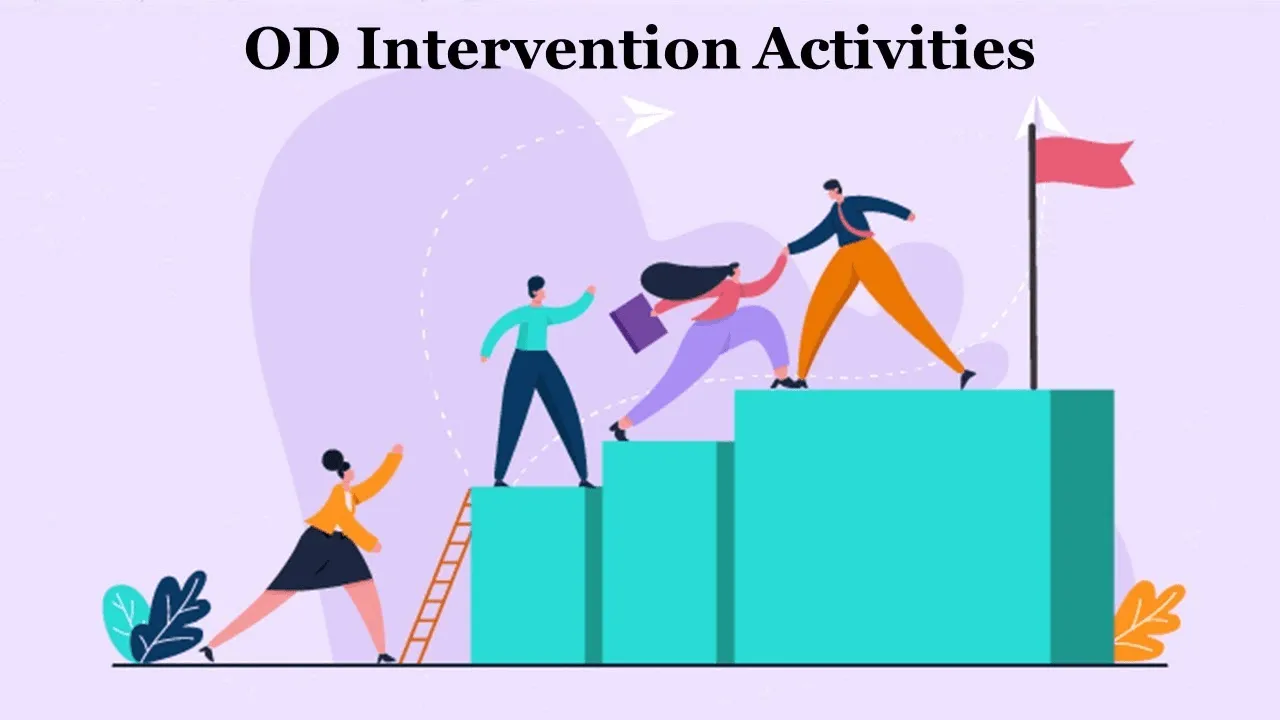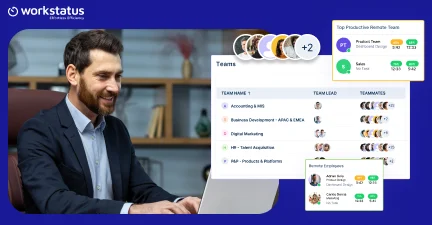Table of Contents
Hardly any organization today can operate without having some form of organizational development.
This is because it has become an integral part of most businesses, especially those who want to survive and prosper through long-term growth potentials that are only possible with strong teams behind them, but what exactly does this term mean?
The idea of organization development has been around for decades, and it’s time for you to know what this term means.
In this guide, we will look at what organizational development is and its goals.
We’ll explore common interventions that organizations use to improve their effectiveness through OD processes, such as strategic planning or training programs for employees who work in different departments across the company’s hierarchy.
Read on to find more.
What Is Organizational Development?

Organizational development (OD) applies knowledge, skills, and experience to improve an organization’s effectiveness.
It is a holistic approach that helps organizations optimize their performance by enhancing their ability to solve problems, design systems, and create cultures that support employee growth and satisfaction.
The world of business is changing at an incredible pace.
Organizations need to stay on top of the latest trends and change with them to retain their employees and compete against new competitors who arise constantly!
Organizational development (OD) helps businesses do just that by equipping staff members through education programs about how best to utilize resources, such as technology tools available today, which can increase communication between co-workers while simultaneously improving product quality.
Difference Between Organizational Development And Human Resources
The difference between human resource management and organizational development is significant. The former takes a more holistic approach to change, while the latter prioritizes individuals’ needs first.
However, there is some overlap because both deal with people in an organization’s structure.
Human resource management is a function that focuses on managing an individual’s employment, from career planning and diversity orientations to providing support for employees who need help adjusting to their job roles.
It focuses on managing one individual’s career development, which positively impacts the overall growth of any organization.
On the other hand, Organizational Development (OD) aims to make workers more productive and an organizational development test helps you in the process.
It works at different levels, from one-on-one interventions to job enrichment programs that help employees perform their tasks better or take on new responsibilities within the company if they are ready.
The differences between human resource management and organizational development can be challenging to understand.
In simple terms, human resource management improves the employee experience, which, in the long run, benefits the organization only.
In contrast, organizational development aligns employees with the company’s principles, which benefits both the employees and the organization.
————————————————————————————————————-
Also Read: Is It Ethical for Organizations to Monitor Employees?
————————————————————————————————————-
Organization Development Interventions
OD interventions take many different forms, but all share a common goal: to improve the quality of life in the workplace and help businesses become more profitable.
Some of the most popular interventions include:
1. Team Building Exercises
When it comes to team building, it’s essential to keep in mind that not all team-building activities are created equal.
There are two main types of team-building activities: those that focus on improving task performance and those that focus on improving social cohesion.
Task-focused activities are designed to improve the efficiency with which a team works together. They typically involve exercises that help team members learn how to communicate better and coordinate their efforts.
Social cohesion-focused activities, on the other hand, are designed to foster a sense of camaraderie and trust among team members. These activities often involve fun, low-pressure activities that help people get to know each other better.Which type of activity is right for your team will depend on your goals.
If you’re looking to improve the way your team works together on tasks, then a task-focused activity is likely the way to go.
If you’re more interested in building relationships and trust within the team, then a social cohesion-focused activity is probably better.
2. Change Management Programs
Change management programs are especially important in today’s business environment.
With the ever-changing landscape of the global economy, businesses must be able to adapt quickly to change. Change management programs help businesses do just that.
Change management programs typically involve four main phases:
- Identifying the need for change
- Planning the change
- Implementing the change
- Evaluating the results of the change
Identifying the need for change: It is the first step in any change management program that can be done through various methods, including interviews, focus groups, surveys, and data analysis. Once the need for change has been identified, it is time to develop a plan.
Planning phase of a change management program should include a clear understanding of the goals of the change and a detailed plan for how those goals will be achieved. The plan should also consider any potential obstacles that might be encountered during the implementation phase.
Implementing the change: After the plan has been developed, it is time to implement the change. This phase can often be the most challenging, as it requires employees to adapt to new methods and processes. Change management programs typically include training and support to help employees through this transition period.
Evaluating the results of the change: Finally, once the change has been implemented, it is essential to evaluate the results. This helps businesses determine whether or not the change was successful and identify any areas that may need improvement.
Try the best employee monitoring software to identify the latest changes and patterns in your organizational development process.
3. Leadership Development Programs
Leadership development programs are among the most effective interventions for organizational development. They help businesses by providing employees with the skills and leadership qualities they need to be successful leaders.
Such programs can be customized to meet the specific needs of the organization and the individuals involved.
Some of the benefits of leadership development programs include:
- Improved communication skills
- Enhanced decision-making abilities
- A greater understanding of company culture
- Increased job satisfaction
- Higher levels of employee engagement
It is vital to consider some key points while choosing any leadership development program:
- It’s essential to select a program that is aligned with the company’s values.
- The program should be tailored to the needs of the organization and the individuals involved.
- The program should be offered by a reputable provider with a proven track record of success.
4. Diversity And Inclusion Initiatives
Each company is different, so it’s essential to tailor interventions to the company’s specific needs.
However, all interventions should aim to improve communication and collaboration within the organization.
Diversity and inclusion initiatives are a crucial part of organizational development.
By creating a more diverse and inclusive workplace, businesses can become more innovative and profitable.
Additionally, these programs help employees feel valued and respected, enhancing their work experience.
—————————————————————————————————————————————-
Also Read: Right Approach To Monitor Productivity Without Destroying Employee Trust
—————————————————————————————————————————————-
There are several ways to create a more diverse and inclusive workplace. Some common strategies include:
- Hiring a more diverse workforce
- Implementing unconscious bias training
- Creating employee resource groups
- Offering flexible work arrangements
- Providing unconscious bias training
By implementing these initiatives, businesses can become more profitable and innovative while providing employees with a better work experience.
These are some examples of the types of interventions that an OD professional might use to help an organization achieve its goals.
The key is to select the right intervention for the specific situation and need.
Models Of Organizational Development

There are a variety of organizational development models that can be used to help organizations achieve their diversity and inclusion objectives. Some of the most popular models include:
1. The 7-S Framework Model
The 7-S Framework Model is a comprehensive organizational framework that can be used to help businesses improve their overall performance.
The model includes seven key elements:
- Strengths
- Weaknesses
- Opportunities
- Threats
- Styles
- Systems
- Skills
By having a closer look at each of these elements, businesses can identify areas where they need to improve.
The Strengths and Weaknesses portion of the 7-S Framework Model is about understanding what your organization does well and where it may improve. This includes looking at both internal and external factors.
For example, an internal factor could be something like your company’s sales process. Are your salespeople effectively closing deals? External factors could include things like the overall economic climate or the competitive landscape.
The Opportunities and Threats portion of the 7-S Framework Model helps businesses identify areas where they can grow or where they may be at risk.
For example, an opportunity could be entering a new market or launching a new product. A threat could be a competitor who is gaining market share.
The Styles portion of the 7-S Framework Model looks at the company’s culture and how it affects performance.
It includes things like the company’s values, norms, and behavior patterns. The goal is to ensure that the company’s culture is aligned with its business goals.
The Systems portion of the 7-S Framework Model looks at the company’s infrastructure and how it supports the business. T
It includes things like financial systems, information systems, and human resources systems. The goal is to ensure that the company’s systems are efficient and effective.
The Skills portion of the 7-S Framework Model looks at the skills and abilities of the company’s employees. This includes things like job training and development programs.
The goal is to ensure that the company’s employees have the skills and abilities they need to be successful.
2. The Kurt Lewin Change Model
This model helps organizations understand how people react to change and how they can best manage it. The three steps in this model are-
- Unfreezing (preparing for a change)
- Changing (implementing change)
- Refreezing (consolidating change)
In the first stage, unfreezing, current entrenched behaviors and assumptions are challenged and destabilized. This allows for a new behavior to be learned in the second stage, changing. In the third stage, refreezing, the new behavior is institutionalized and stabilized.
This model is often used in business settings to facilitate organizational change initiatives. However, it can also be applied more broadly to any type of change – personal or societal.
For example, if you’re trying to quit smoking, you first need to unfreeze your current behavior (smoking cigarettes regularly). Then, you would change your behavior by learning a new habit (not smoking cigarettes).
Finally, you would refreeze your new behavior by making it part of your everyday routine.
The Kurt Lewin Change Model is just one example of how change can be enacted. There are many different models and approaches to change – what’s important is finding the right one for you and your situation.
3. The Tuckman Model
The Tuckman model is a 4-stage model of team development.
The model was first proposed by Bruce Tuckman in 1965 and has since been widely used to help teams work more effectively together.
The four stages of this model are:
- Forming
- Storming
- Norming
- Performing
Each stage has its own distinct characteristics and challenges that teams must overcome to succeed.
Forming: This is the initial stage of team development, where members are first getting to know each other and establishing initial roles and expectations. There is typically a lot of excitement and energy as teams start to form their identity.
The key challenge at this stage is ensuring that all members feel like they are a part of the team and that their voices are heard.
Storming: This is when conflict typically starts to arise, as members begin to have disagreements about how the team should operate. It is essential for teams to learn how to effectively resolve conflict at this stage, as it can be a major source of anxiety for members.
The main challenge is finding a way to work through disagreements for the teams to continue to function effectively.
Norming: At this stage, team members develop more trust and respect for each other and establish common goals and ground rules for how the team will operate.
At this stage, teams typically become more cohesive and focused and can better achieve their goals.
The big obstacle at this stage is maintaining open communication and keeping everyone on the same page.
Performing: This is the stage where teams are operating at their peak level of performance. Members are highly skilled and efficient in their roles and work well together to achieve common goals. The major problem at this stage is to continue to push boundaries and find new ways to improve team performance.
The Tuckman model is a helpful tool for understanding how teams develop over time. By understanding the challenges that teams face at each stage, you can be better prepared to help your team overcome them and reach their full potential.
Each of these OD models has its own advantages and disadvantages, so selecting the right one for your organization is essential.
Whichever model you choose, remember that organizational development is a journey, not a destination.
Closing Thoughts
The organizational development process is not an overnight summation of events. It’s a long, continuous cycle that must be diligently implemented and evaluated to have any effect on the company as a whole.
The goal of organizational development is to promote long-term growth and productivity. This pursuit can be seen at the individual, group, or company level with one thing in common — all levels aim to improve the company’s operations for future growth and success.
If you need ways to improve your organization’s productivity and bottom line, consider investing in workforce analytics software. It can help you take a data-driven approach to employee and organizational development, making sure your workforce has the skills and knowledge they need to be successful.
FAQs
1. How can an organization ensure the development of its employees?
Organizations can ensure the development of their employees by providing opportunities for learning and growth, such as training programs, mentorship programs, job shadowing, and cross-functional projects.
It’s also essential to provide regular feedback and performance evaluations to help employees understand their strengths and areas for improvement.
2. How can organizational development benefit a company?
Organizational development can benefit a company by improving its overall effectiveness, employee satisfaction, and productivity.
By enhancing communication, collaboration, and problem-solving skills, organizations can become more innovative and profitable.
Additionally, organizational development can create a more diverse and inclusive workplace, which can lead to a better work experience for employees and a positive reputation for the company.













